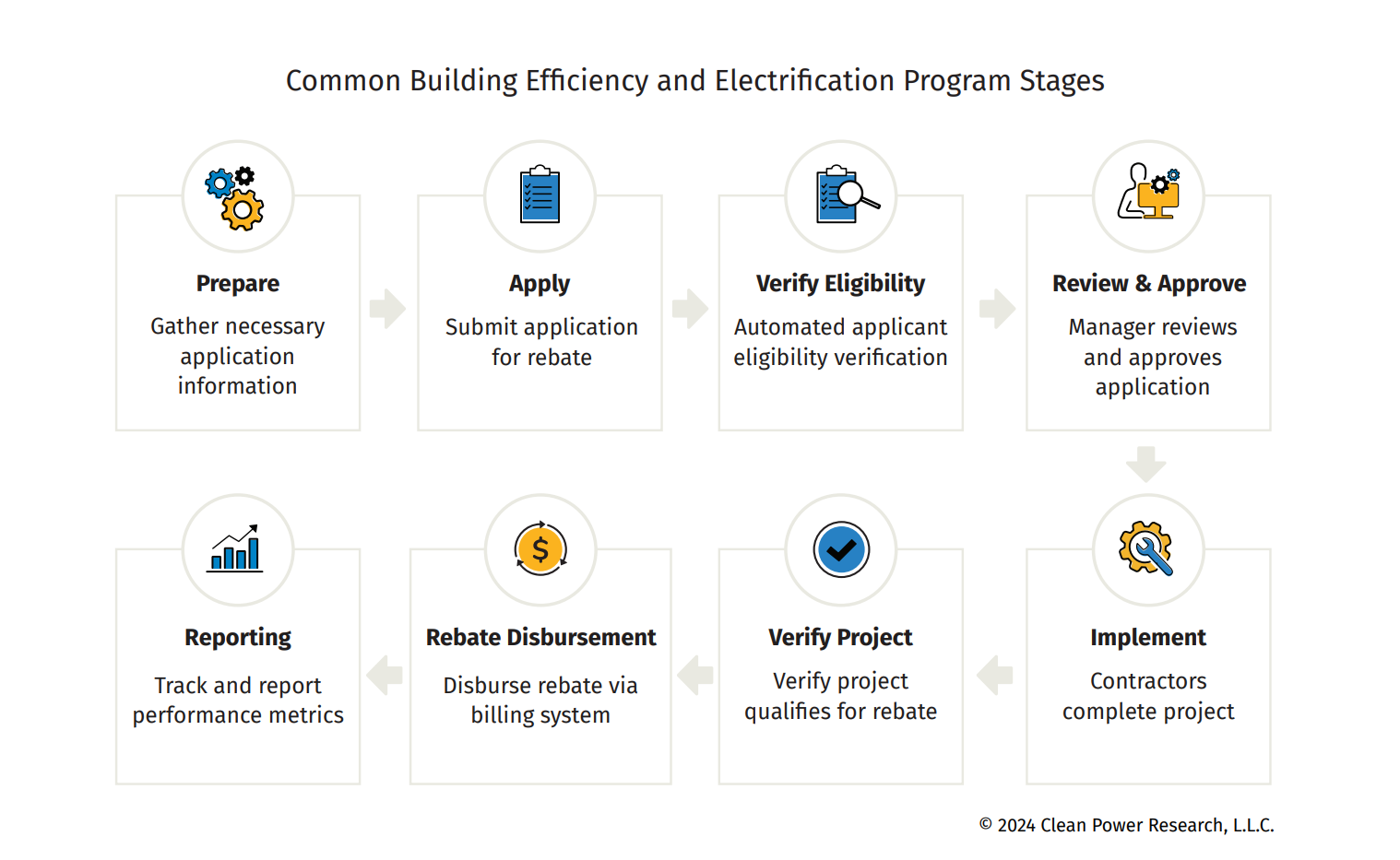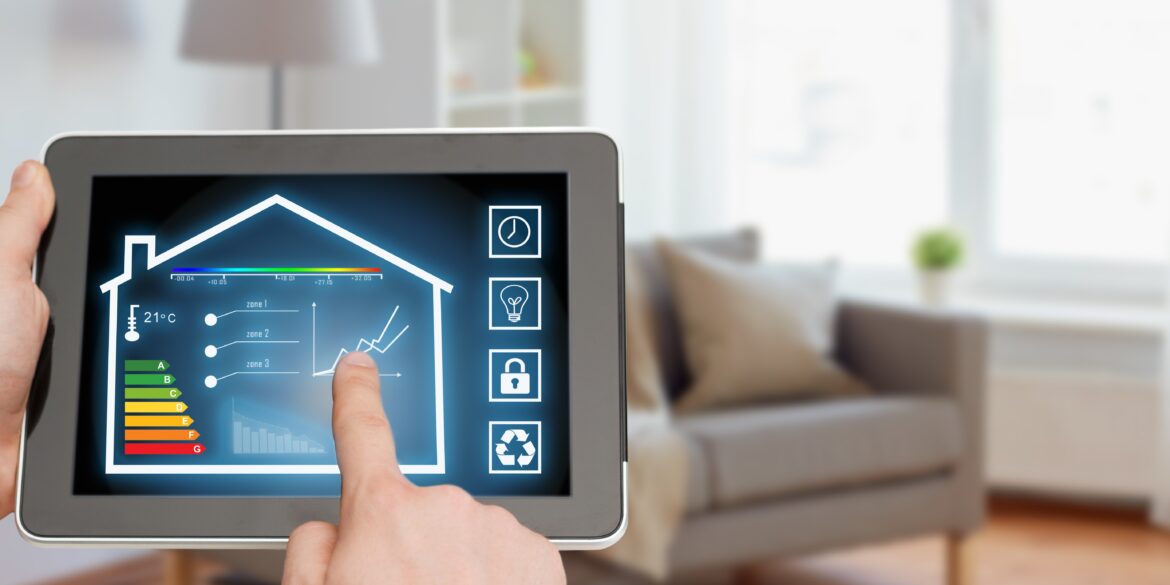As the demand for clean energy intensifies, utilities and energy agencies face increasing pressure to meet ambitious sustainability targets while maintaining operational efficiency. Electrification and home performance rebate programs have become essential tools for reducing carbon emissions, lowering energy costs and supporting the transition to a cleaner energy system. Residential buildings account for 21% of total energy use and 15% of U.S. greenhouse gas emissions. This means successful programs are crucial for reaching targets—and lowering energy bills by up to 20%—within a decade.
To achieve these goals, utilities and energy agencies must prepare for the intake of hundreds of thousands of applications per year. For instance, New York plans to electrify 1 million homes by 2030. To meet that goal, 125,000 homes will need to be electrified per year. As initiatives and programs like this grow, program managers need scalable software solutions to handle the increasing complexity and volume of applications.
While there are many process automation software tools available, utility programs have unique needs that not all solutions address. Below are key considerations for utilities that need to scale electrification and home performance rebate programs effectively.
Automation of complex, high-volume processes
As programs grow, manual processes such as paper applications and spreadsheets become bottlenecks. Systems that handle a few hundred applications can quickly become overwhelmed when scaled to thousands, resulting in inefficiencies and errors that hinder progress.
Automating tasks such as eligibility verification, rebate calculations and inspections reduces manual entry, eliminates bottlenecks and ensures fast, accurate processing—critical for maintaining program efficiency.

Flexible workflow configuration
Many program managers recognize that spreadsheets won’t suffice as demand grows, so they look for software solutions that can help. However, many software solutions lack the flexibility to adapt to evolving program requirements within one secure environment. Rigid systems that rely on IT for hard-coded changes slow down the process and make optimizing program workflows based on contractor feedback harder.
A no-code software solution allows managers to adjust workflows without relying on IT, providing the flexibility to adapt as programs evolve. This adaptability is crucial for ensuring compliance, efficiency and stakeholder satisfaction as programs scale.
Efficient communication and project coordination
As electrification and home performance rebate programs scale, clear communication between administrators, contractors and other stakeholders becomes increasingly critical. In smaller programs, program managers may get by with manual emails and phone calls, but at scale, this can lead to delays and inaccuracies. Accurate communication about eligibility standards and rebate disbursements is crucial to both the utility and the contractor.
An integrated communication and workflow management software solution can ensure that all stakeholders remain aligned and receive timely updates, which prevents delays and ensures seamless project completion.
Seamless integration with existing systems
Managing large-scale electrification rebate programs requires a platform that integrates smoothly with existing utility systems, such as customer information systems (CIS) and billing platforms. Without seamless integration, data silos develop, creating inefficiencies and errors that can frustrate staff and contractors alike.
The ideal software solution should be able to reconcile data across multiple systems, enabling smooth data flow and minimizing manual entry. By connecting critical systems like Oracle, Salesforce or other legacy platforms, utilities can ensure that rebates are processed accurately and that program updates are communicated effectively to customers and contractors.
Robust reporting
As application volumes increase, so does the need for robust reporting capabilities. Program managers must generate detailed reports to track performance, meet internal targets and satisfy external stakeholder requirements. Manual reporting or limited tools can slow decision-making, leading to inaccuracies and eroding stakeholder trust.
The right software solution will deliver flexible reporting capabilities that enable program managers to generate reports in near real-time, enabling them to make data-driven decisions and optimize program outcomes while keeping utility executives and state agencies informed of program progress.
Finding the right software solution
Scaling rebate programs effectively requires the right software solution. Ideally, that solution will automate manual processes, offer flexible workflows, integrate seamlessly with existing systems and provide scalable reporting—all of which are essential for managing programs accurately and efficiently.
Efficiency First California, for example, successfully implemented Clean Power Research’s PowerClerk® to automate tasks including application intake, customer enrollment and rebate approval. With PowerClerk, they were able to optimize workflows in real time based on contractor feedback for SMUD’s Home Performance Program. Their implementation of PowerClerk took 4 months and reduced rebate approval times from 12 to 2.5 days, demonstrating how the right software can significantly improve program efficiency and outcomes.
Interested in similar results? Contact Clean Power Research to schedule a live PowerClerk demonstration and see how PowerClerk can help your electrification and home performance programs scale seamlessly.
